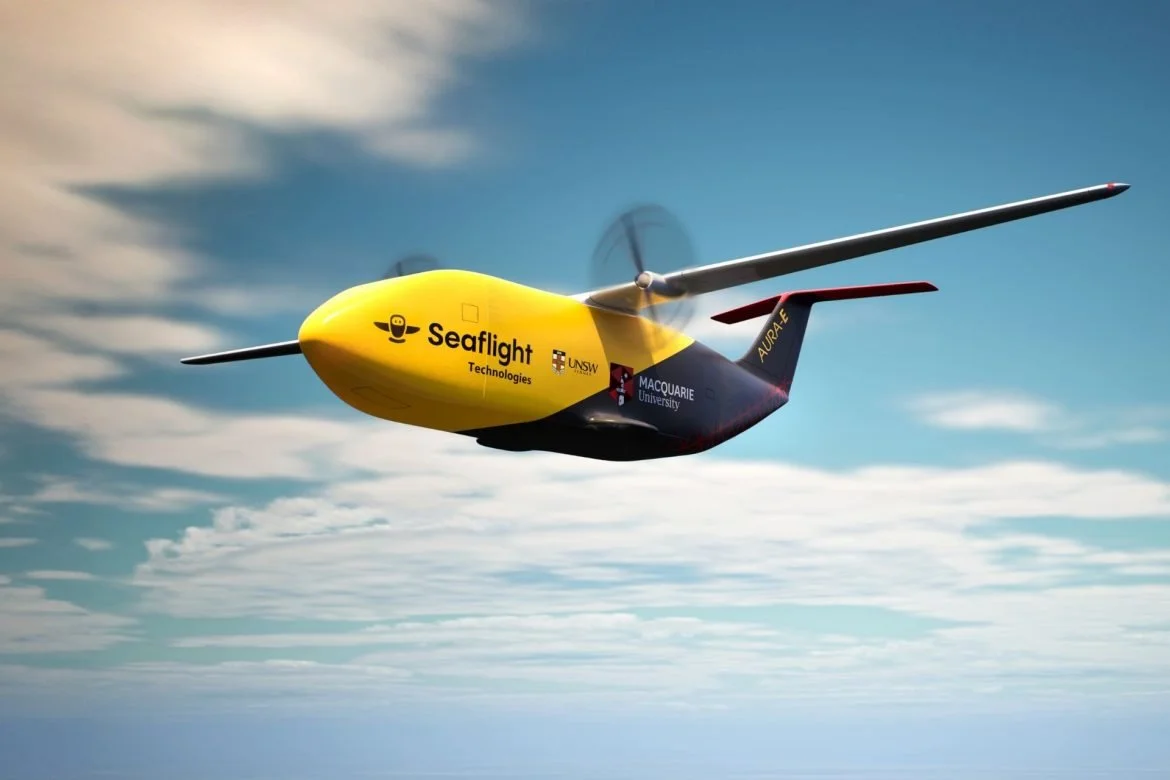A New Era of Flight: Electric Cargo Drones Poised to Transform Life in Remote Australia
Credit: Graham Doig, Seaflight Technologies
In the heart of one of the most isolated and rugged landscapes on Earth, a quiet revolution is taking shape—one that could redefine how communities in remote Australia receive vital goods and services. It doesn't roar in like a truck or rely on vast convoys of diesel-fueled logistics. Instead, it glides in silence, powered by clean energy and guided by innovation.
Meet the AURA-E, a pioneering all-electric cargo drone poised to bring near-zero-emissions logistics to some of Australia’s most hard-to-reach places. Led by a team of engineers at the University of New South Wales (UNSW) and developed in partnership with Seaflight Technologies, Macquarie University, and an Australian consortium, this ambitious project aims to revolutionize how rural communities access medical supplies, fresh produce, and critical equipment—swiftly, sustainably, and securely.
From Diesel Roads to Electric Skies
For decades, essential deliveries to Australia’s remote outposts have relied heavily on road transport—long hauls by trucks that emit large quantities of greenhouse gases and take days to traverse vast distances. The AURA-E project envisions a cleaner, faster alternative: heavy-lift electric drones capable of flying hundreds of kilometers in a single journey.
“You can start talking about resupplying a community with medical supplies or fresh fruit and vegetables that otherwise would have come from the other side of the country in a diesel-spewing truck,” said Graham Doig, Seaflight’s founder and Executive Technical Fellow. “We’re taking that off the road and replacing it with near-zero emissions technology that can provide people with goods they need the next day.”
Engineering the Future of Logistics
At the heart of this transformation is a next-generation all-electric powertrain, designed by UNSW aerospace engineer Priestley, who leads the integration and testing of the drone’s propulsion systems. This cutting-edge system will energize the AURA-E—a fixed-wing, long-range drone specifically engineered for heavy cargo transport.
To optimize the drone’s range and lifting capacity, engineers are implementing an active aerodynamic flow control system—a novel technology that manipulates airflow over the wings in real time. This results in lower drag, greater lift, and enhanced energy efficiency—key ingredients for extending flight distance and maximizing payload.
The first prototype of the AURA-E is being designed to carry 88 to 110 pounds (40–50 kilograms) across long distances. But the team’s sights are set higher: future models are expected to handle up to 660 pounds (300 kilograms), significantly expanding their utility for industry, emergency response, and community resupply missions.
Credit: Richard Freeman
A First Flight to Inspire the Next Generation
Mark your calendars: the AURA-E is scheduled to take its maiden flight in late 2025. And it won’t just be the technology taking flight—UNSW students will be at the controls as remote pilots and flight testers, gaining hands-on experience in what could become one of the most transformative aviation sectors of the 21st century.
The opportunity to participate in the project underscores another key aim: building a new generation of aviation professionals equipped not just with technical knowledge, but with entrepreneurial vision. As Doig put it, “If you imagine drones as being almost like a mini airline, you could have hundreds or even thousands of flights per day. You have to understand every aspect that goes into running this mini airline.”
More Than Delivery: A National Strategic Asset
Beyond its clear utility for logistics, the AURA-E project holds strategic significance for Australia’s economic and national security. Drones are already being adopted in critical sectors such as mining, agriculture, and surveillance, and their importance will only grow.
Priestley emphasized the need for strong cyber and operational security: “It’s important we get security right with these types of drones in the UAV sector, because otherwise we risk hacking. Drone security is crucial to manage public perceptions and acceptance of a technology that has the capacity to spy on you.”
By developing these capabilities domestically, Australia strengthens its sovereignty in a field increasingly dominated by international players. The AURA-E project is already benefitting from public investment, having received $1.5 million from the Australian Federal Government’s Emerging Aviation Technology Partnerships (EATP) program—half of the project’s $3 million budget.
Charting a Cleaner, Smarter Course
The AURA-E is more than an aircraft. It’s a symbol of what's possible when engineering vision meets societal need. It shows how advanced technology can bring clean energy, faster logistics, and greater resilience to regions that have long been underserved.
As climate change accelerates and energy security becomes a global priority, Australia’s leap toward electrified, autonomous flight could serve as a model for the rest of the world. The skies above the Outback may soon host a fleet of sleek, silent drones—each carrying not just packages, but the promise of a more connected, sustainable future.
And it all begins with a single flight.
This article contains AI generated content using information from these sources:
Interesting Engineering - https://interestingengineering.com/transportation/all-electric-drones-to-replace-trucks
UNSW Sydney - https://www.unsw.edu.au/newsroom/news/2025/03/all-electric-drone-system-set-for-take-off

